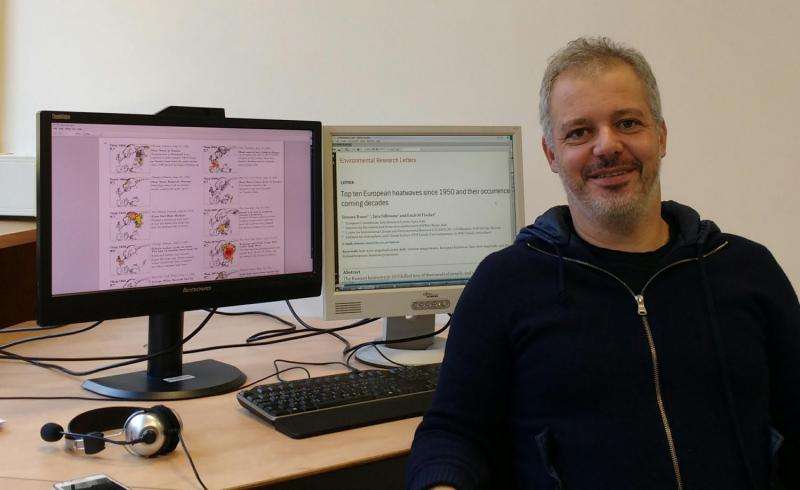New metric mapping top 10 European heat waves predicts strong increase in next two decades

Scientists have developed a new method to model heat wave magnitude that takes both the duration and the intensity of the heat wave into account.
The new metric—the Heat Wave Magnitude Index daily (HWMId)—indicates that a little-studied heat wave in Finland in 1972 had the same extent and magnitude of the 2003 European heat wave that is considered the second strongest heat wave since 1950.
The findings are published today, 27th November 2015, in the journal Environmental Research Letters.
The researchers have also shown that heat waves are likely to increase both in severity and number during the next two decades.
"Even if global mean temperatures don't increase too much, we'll see more extreme heat events" explains Simone Russo, an author of the paper, based at the European Commission Joint Research Centre, Ispra, Italy. "These will be hotter, longer, and more frequent."
The new metric also proposes an improvement to the existing index used to quantify heat waves, which does not weight events hotter than the historical maximum 'worse' than events equal to the historical maximum.
"We've introduced a simple mathematical function" continues Russo. "It also us to consider events infinitely hotter than historical maximums—we think it'll be very useful for other scientists in this field."
The researchers also considered the 2015 warm weather, and compared it with the top 10 European heat waves since 1950.

The 2015 summer heat wave had a lower magnitude than that which occurred in the summer of 2003, but was comparable to other heat waves.
"Its largest anomalies [higher than average temperature] and duration were recorded in Switzerland in July, and Germany in August" adds Russo. "Its spatial extent was comparable to a heat wave that occurred in Greece in 2007, one in Central Europe in 1994 and one in Scandinavian last year".
Russo and his colleagues are now in discussions regarding adopting the new model in the international literature. Their next work will be to consider the wider implications of heat waves on health, crops, and finance.
More information: Simone Russo et al. Top ten European heatwaves since 1950 and their occurrence in the coming decades, Environmental Research Letters (2015). DOI: 10.1088/1748-9326/10/12/124003
Journal information: Environmental Research Letters
Provided by Institute of Physics



















